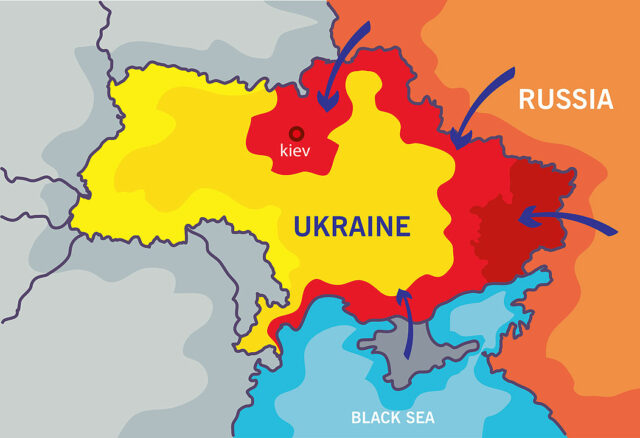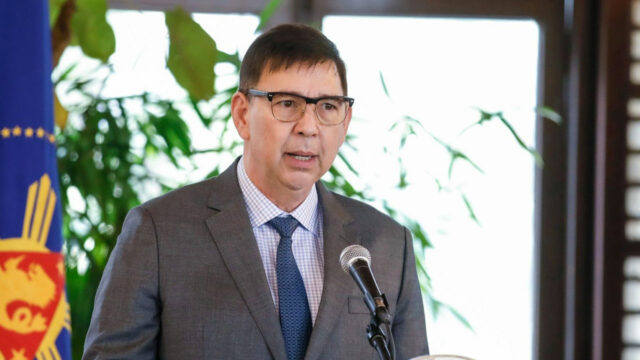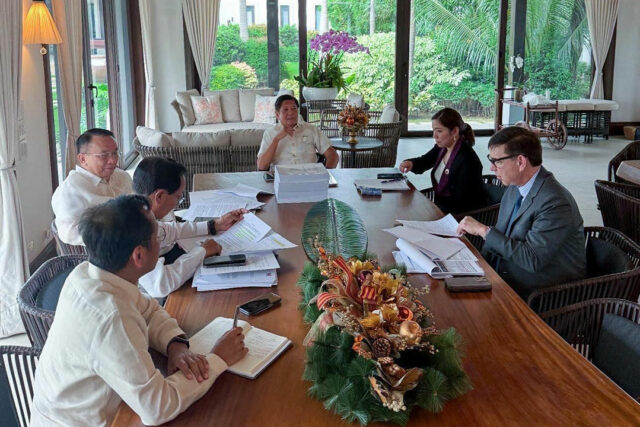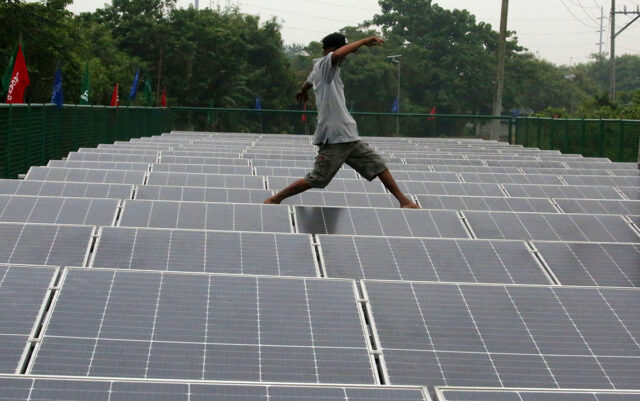By Ashley Erika O. Jose, Reporter
THE PHILIPPINE AVIATION industry is poised for growth in 2025, driven by the maintenance, repair, and overhaul (MRO) sector and increasing travel demand, despite ongoing global supply chain issues, according to analysts.
“Cost and supply chain issues may still persist in 2025, but there will definitely be reasonable growth in profitability worldwide,” Nigel Paul C. Villarete, senior adviser on public-private partnerships at the technical advisory group Libra Konsult, Inc. and former chief executive officer of Mactan-Cebu International Airport Authority, said in a Viber message to BusinessWorld.
The country’s aviation industry has a bright outlook, Mr. Villarete said, adding that the country’s air sector will be driven by promising gross domestic product forecasts and the country’s emerging attractiveness as a maintenance, repair, and overhaul choice for regional airlines.
The Development Budget Coordination Committee trimmed the economic growth target for this year to a range of 6-6.5% but widened the target band to 6-8% for 2025 until 2028.
He said both the Mactan-Cebu International Airport and the Clark International Airport have adequate MRO capabilities to further develop their capacities.
“This is a subsector worth looking forward to,” he said.
While global supply chain issues will continue to hamper growth in 2025, there is still room for growth, Mr. Villarete said.
According to a report by the International Air Transport Association (IATA) dated Dec. 10, the global air industry is still slated for profitability next year despite persisting supply chain issues.
“Overall financial performance is expected to improve in 2025 on the back of lower jet fuel prices and efficiency gains. Further increases are being held back by forced capacity discipline resulting from unresolved supply chain issues,” IATA said.
Global supply chain constraints have disrupted operations of airlines, such as shortages of parts, labor, and new planes, especially as airline companies are on the path to recovery from the pandemic.
PROFITABILITY OF LOCAL AIRLINES
“Philippine airline companies are positioned at a critical juncture in 2025. Their profitability will likely depend on several factors: recovering travel demand, fuel price stability, government regulations, and competitive dynamics in the Southeast Asian market,” Globalinks Securities and Stocks, Inc. Head of Sales Trading Toby Allan C. Arce said in a Viber message.
For the nine months ended September, both listed local airlines posted lower income and gross revenues for the period.
Earlier, market watchers said that listed airline companies are expected to deliver mixed results for 2024, mainly due to the anticipated recovery in the sector but possibly outweighed by the volatility of the airline industry.
Mr. Arce said recent trends suggested cautious optimism due to strong economic growth and rising tourism in the Philippines.
Rizal Commercial Banking Corp. Chief Economist Michael L. Ricafort said that airline companies’ profitability would highly depend on the further recovery and growth of passenger and cargo volume.
“[This comes after] as foreign tourism numbers move closer to pre-pandemic levels,” Mr. Ricafort said.
For the January-to-September period, air passenger volumes at the Ninoy Aquino International Airport (NAIA) exceeded those of the equivalent period in the last pre-pandemic year, mainly driven by growth in domestic travel, according to the Manila International Airport Authority (MIAA).
The MIAA reported that air passenger volume totaled 37.38 million for the nine months, up 10.7% and 4.2% higher than the total recorded in the first nine months of 2019.
For the first nine months, MIAA reported 17.29 million international passengers, of which 8.9 million were departing passengers and 8.39 million arriving. Domestic travelers for the period amounted to 20.09 million, MIAA said.
For December, the Civil Aeronautics Board has kept the passenger and cargo fuel surcharge for domestic and international flights at Level 4, the third time it remained at this level this year.
Rino E. Abad, director of the Oil Industry Management Bureau at the Department of Energy, said fuel movement, including aviation fuel, will always remain volatile and would be hard to predict.
However, key factors such as the expected extension of oil cuts by the Organization of the Petroleum Exporting Countries and their allies, including Russia (OPEC+), will likely affect demand, thereby increasing fuel prices.
“So supposedly by December, OPEC+ will increase the supply. But they are delaying it, so if they start increasing the supply, then we will be confident that the market will see lower prices,” Mr. Rino said in a phone interview.
Meanwhile, Jayniel Carl S. Manuel, an equity trader at Seedbox Securities, Inc., said Cebu Pacific and Philippine Airlines are set to experience growth in 2025.
He said the resurgence of global travel demand will undeniably contribute to this growth.
“There’s a palpable eagerness among people to travel again, especially during peak seasons like the summer vacation months. This pent-up demand is expected to translate into higher passenger volumes for airlines,” Mr. Manuel said in a message.
For the third quarter, both listed airlines saw their third-quarter attributable net income decline.
Cebu Air, Inc., the operator of Cebu Pacific, incurred an attributable net loss of P173.19 million from an attributable net income of P1.28 billion in the same period last year as higher expenses put pressure on the company’s profit for the period.
PAL Holdings, Inc. saw its third-quarter attributable net income plunge to P789.79 million, more than fivefold lower than last year’s P4.28 billion due to lower passenger revenue during the period.
Fundamentally, both Cebu Pacific and Philippine Airlines have taken strategic steps to strengthen their market positions, she said, noting that, for instance, Cebu Pacific has been aggressively expanding its fleet and route network.
In October, Cebu Pacific finalized its landmark deal of 152 aircraft from Airbus SE valued at a total of P1.4 trillion ($24 billion), making it the biggest aircraft order in Philippine history.
“Philippine Airlines, on the other hand, has undergone restructuring efforts to optimize operations and reduce debt, positioning itself for sustainable growth,” he said.
“Recent developments also bolster this optimistic scenario. The government has announced investments in tourism infrastructure, aiming to enhance airport facilities and connectivity to key destinations,” Mr. Manuel said.











